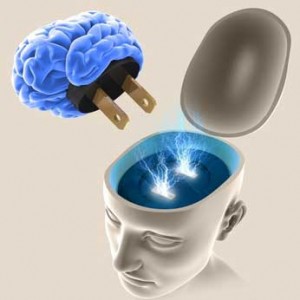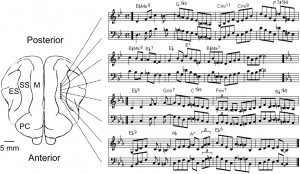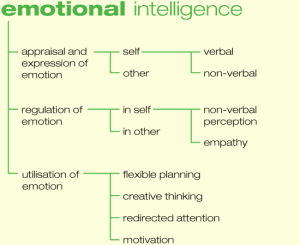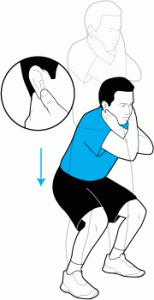Does Asking Why Make You Smarter?
 Perhaps not but asking why five times in a row is a simple and proven technique for getting to the root cause of a problem or issue. And getting to the root cause greatly improves your odds of finding good solutions.
Perhaps not but asking why five times in a row is a simple and proven technique for getting to the root cause of a problem or issue. And getting to the root cause greatly improves your odds of finding good solutions.
The technique known as the five-whys was originally developed by Sakichi Toyoda, often called the father of the industrial revolution in Japan. Let’s assume for example that a customer order is not shipped from the dock on time. Here is how the technique works:
- Why1: Why did the shipment not leave the dock on time?
- The order was not completed before the last truck left
- Why2: What the order not complete?
- The automated assembler on line 3 broke down
- Why3: Why did the automated assembler break down?
- We failed to complete the maintenance schedule and the the control froze
- Why4: Why did we fail to complete maintenance?
- Frank, a new employee forgot to do it
- Why5: Why did Frank forget to do it?
- It was not included in his new employee training
Although a bit simplistic it shows the power of the five-whys technique for driving thinking to the root cause. A problem with a customer order was ultimately caused by a fault in new employee training. Learning such simple techniques is a powerful way to improve cognition and so they will be a frequent topic on the Next Brain Blog.
For a more detailed overview, including some of the short comings of the technique check out How to use the Five WHY approach.
Please post a comment and share your success with the five-whys or related problem solving techniques.
Source: Image of the Hand.
Categories: Problem Solving, Training Tags: quality technique
Want to Dramatically Improve Self-Control?
 Then learn to manage your mental energy!
Then learn to manage your mental energy!
Science has made considerable inroads over the last few years defining, measuring and understanding the role mental energy plays in cognitive performance. Mental energy is defined as the combination of the ability to do mental work, the motivation for doing that work and your subjective feeling of fatigue. Key findings about mental energy include:
- We only have so much to use – it is a limited resource
- Exercising self-control or regulating our thoughts, emotions and behavioral responses burns considerable mental energy – much more than other cognitive processes such as learning and decision-making
- Running low on mental energy means loss of impulse control
- We can do specific things to replenish our supply of mental energy
Given the central role that mental energy (and its management) plays in cognitive performance it will be a frequent topic on the Next Brain blog.
Techniques for getting started in managing your mental energy include:
- Measuring your level of self-control and other cognitive tendencies that make extensive use of mental energy
- Journaling to understand how you wisely (or not) you use mental energy throughout the day
- Planning or budgeting your mental energy so you don’t set goals or engage in activities that result in sever depletion
- Developing habits that naturally restore your supply
Little things make a big difference when it comes to managing mental energy.
Categories: Executive Function, Lifestyle, Manage Emotions, Mental Focus, Training Tags: mental energy
Integrative Body-Mind Training Improves Brain Functions in Just Five Days!
 There is growing evidence that a fast-track approach to mediation may in fact produce results in as little as five days. This would be a breakthrough as using mindfulness or mediative techniques to improve your cognitive functioning normally takes months or years.
There is growing evidence that a fast-track approach to mediation may in fact produce results in as little as five days. This would be a breakthrough as using mindfulness or mediative techniques to improve your cognitive functioning normally takes months or years.
The technique is called integrative body-mind training (IBMT) and requires 20 minutes per day for five days. Subjects with no previous training in mediation techniques showed significant improvements in mental focus, mood and stress.
The process involves using a number of techniques together under the guidance of a coach. The seminal article on IBMT, Short-Term Medication Training Improves Attention and Self-Regulation, describes it this way:
“Training in this method is followed by 5 days of group practice, during which a coach answers questions and observes facial and body cues to identify those people who are struggling with the method. The trainees concentrate on achieving a balanced state of mind while being guided by the coach and the compact disc that teaches them to relax, adjust their breathing, and use mental imagery.”
A more detailed description of how this works over a five day period can be found in this Introduction to IBMT written by Dr. Yi-Yuan Tang a pioneer in the field.
I am interested to hear from readers that can recommend a coach, suggest resources or share experiences about IBMT. I’d like to try it and write additional posts for the next Brain Blog.
Source: Image of running man.
Categories: Ancient Ways, Executive Function, Memory and Learning, Mental Focus, Music and Audio, Training Tags: meditation, mindfulness
Does Listening to Classical Music Increase IQ?
 I get this question a lot. It goes back to the craze around the Mozart Effect or the idea you can get smart by listening to Mozart’s music. As far as I can tell there is no (or little) scientific evidence to support the idea. There is some evidence however that listening may temporarily (10-15 min) improve your spatial reasoning skills.
I get this question a lot. It goes back to the craze around the Mozart Effect or the idea you can get smart by listening to Mozart’s music. As far as I can tell there is no (or little) scientific evidence to support the idea. There is some evidence however that listening may temporarily (10-15 min) improve your spatial reasoning skills.
More relevant for readers of the next Brain Blog is the growing evidence that learning to play a musical instrument can improve many cognitive skills and perhaps raise IQ. Scans reveal musician’s brains look different and they tend to score higher on standardized tests for spatial-temporal tasks, verbal memory and even math. One study suggested a small increase in IQ of children taking music lessons.
As learning to play a musical instrument brings intrinsic satisfaction, it may be a particularly good option for building YourNextBrain! Interested to hear from reader with brain boosting experiences related to learning an instrument.
Source: Image of brain and sheet music
Categories: Child, IQ and EQ, Memory and Learning, Music and Audio, Training Tags: Mozart Effect
Is Your Next Brain in Fact Your Heart?
 Daniel Goleman popularized the notion of Emotional Intelligence in 1995 in his best selling book by the same name. The idea is that a lot of what counts as smarts comes from our ability to perceive and manage emotions in ourselves and others. This is the foundation for self control and healthy relationships and leads to a successful life. The focus on emotional thinking versus rational or logical thinking as a key to intelligence was a huge paradigm shift that is still unfolding today.
Daniel Goleman popularized the notion of Emotional Intelligence in 1995 in his best selling book by the same name. The idea is that a lot of what counts as smarts comes from our ability to perceive and manage emotions in ourselves and others. This is the foundation for self control and healthy relationships and leads to a successful life. The focus on emotional thinking versus rational or logical thinking as a key to intelligence was a huge paradigm shift that is still unfolding today.
There is no doubt that understanding and manging emotions is a key for improving learning, decision-making, creativity, collaboration and other cognitive skills. Emotional intelligence will be a frequent topic on the Next Brain Blog. In an earlier post I provided links to quick and in-depth surveys that let you measure your emotional quotient (EQ) or level of emotional intelligence. In this post we will start to examine techniques for improving it.
For a quick introduction to how to develop your EQ check out the HELPGUIDE’s post on Five Key Skills for Building Emotional Intelligence. Although there are literally thousands of websites, books and other resources for learning about EQ I like this site. It demonstrates that emotional intelligence is rooted in common-sense life skills such as quickly reducing stress and managing your own feelings. No rocket science but the fact is that we often don’t take the time to develop specific skills to do these kinds of things and that impedes our cognitive performance.
Check the site out and please comment on the specific techniques you use to develop EQ.
Source: Emotional Intelligence Image
Mental Practice Makes Perfect
Playing things out in your mind before you actually do them is a great way to improve performance in many different types of tasks. Mental practice or rehearsing is a technique that is taught to athletes, managers, high-performance sales people and many other professionals. How to improve you skill in mental practice will be a frequent topic on the Next Brain Blog.
For a quick introduction check out Head Games: An Introduction to Mental Rehearsal by Dr. Scott Williams a Professor of Management and Director of the Center for Innovation at Wright State University.
He offers this nine-step procedure for doing mental practice (and I quote):
 “Find a time and place where you won’t be interrupted.
“Find a time and place where you won’t be interrupted.- Recline or lie down, and close your eyes.
- Relax, concentrate, and focus. Take deep breaths and exhale slowly. As you exhale, imagine that stress is leaving your body. Start at your feet … feel all the stress leave your feet … then your legs … then your chest … all the way to the top of your head … feel all the stress leave your body. Free your mind of distractions and allow your mind to focus on the relaxation process.
- Once relaxed, focus on the specific challenging task.
- Mentally tell yourself that you are confident and that you have the ability to perform this task successfully. Repeatedly tell yourself, with confidence, that you will be successful.
- Imagine what you will see just before you begin the task. Visualize yourself as an active participant, not as a passive observer. For example, to mentally rehearse putting a golf ball, imagine that you are standing on the green rather than watching yourself from the gallery.
- Remaining relaxed and focused, mentally rehearse successful performance of this task. Imagine going through the process and seeing successful results.
- Repeat step 7 several times.
- Finally, open your eyes and smile. You have successfully performed in your mind, which is great preparation for actual performance. You should now be confident that you will perform successfully in the real situation. Remember to praise yourself for being successful. Self-reinforcement is another a key to self-motivation.”
Try this out on a task or performance you have coming up in the next couple of days. Does it work? Leave a comment and share your experience and results.
Source: Image of Diver
Categories: Memory and Learning, Training Tags: brain training, sports
Want a High Performance Mind?
Combat soldiers, surgeons, ER professionals, Olympic athletes and others that face extreme-stress situations involving judgement must all develop high performance minds to be successful. Cognitive performance in extreme circumstances has been studied closely and training programs and techniques have been developed and tested. How to use these techniques to build a high performance mind will be a frequent topic on the Next Brain Blog.
 For example, The Mind Fitness Training Institute, is in the news for a program they have for training the minds of US combat soldiers. They just completed a pilot study that demonstrated how mindfulness training techniques can improve working memory and affective response (or emotional control).
For example, The Mind Fitness Training Institute, is in the news for a program they have for training the minds of US combat soldiers. They just completed a pilot study that demonstrated how mindfulness training techniques can improve working memory and affective response (or emotional control).
Soldiers in the program start by mastering attentional control and concentration using a mindfulness training technique. A briefing document explains:
“At first, exercises emphasize building concentration by focusing on one object of attention, such as the breath, contact between the body and the floor or chair, or sensations within specific body parts. This single focus of attention is maintained throughout a practice session; when attention wanders, it is returned to the object of attention. Later in the course, exercises require attending to body sensations during movement and “shuttling” the attention between inner sensations andouter experiences (i.e., sights or sounds).”
This technique is used in many other programs that promise to build a high performance mind. An important finding because it tells us:
The first step in developing a high performance mind is to practice attentional control and concentration using a very simple training technique.
And you don’t need to have an extreme-stress job or attend a special training program to get started. Here is what you do:
- Rest comfortably by laying down or sitting
- Close your eyes if you want to
- Focus on your stomach and feel your breathing
- Pay attention to all your bodily sensations in your belly as move through the complete breathing cycle of inhaling and exhaling
- If you mind wanders to another topic or sensation return your attention to your belly and the cycle of breath.
Your only task here is to bring your mind back to the sensation of breathing every time it wonders. Sounds simple but it takes practice. And what you are learning is invaluable – how to control your own mind!
15 minutes per day for a week should produce a noticeable result. At the very least you will have first hand experience in attempting to control you attention in a systematic way. If you try it and please share your experience by leaving a comment.
Categories: Ancient Ways, Manage Emotions, Mental Focus, Training Tags: meditation, mindfulness
Morning Pages will Boost Your Creativity
 Individual creativity or the mental ability to generate new and relevant ideas on-demand is a highly prized skill. Although creativity is not fully understood there are many proven techniques we can use to improve it. Creativity will be a frequent topic on the Next Brain Blog.
Individual creativity or the mental ability to generate new and relevant ideas on-demand is a highly prized skill. Although creativity is not fully understood there are many proven techniques we can use to improve it. Creativity will be a frequent topic on the Next Brain Blog.
A great way to get started in developing your creativity is to work through a self-paced program such as The Artist’s Way. A primary technique the book teaches is called the Morning Pages.
“Morning Pages are three pages of longhand, stream of consciousness writing, done first thing in the morning. There is no wrong way to do Morning Pages– they are not high art. They are about anything and everything that crosses your mind– and they are for your eyes only.”
Doing this teaches your brain how to flow, initially without any specific purpose. But it is the first step. Much like “just start running” would be a first step in training for a foot race.
Doing Morning Pages for at least three months should produce a noticeable change in your capacity to think creativity.
For more detail on the Morning Pages and a second technique check out Basic Tools. This is a 16-page 8.5M PDF file.
If you have been using Morning Pages or other writing-based creativity techniques please leave a comment and share your experiences and results.
Categories: Books, Problem Solving, Training Tags: creativity
Can 3 Minutes of Yoga Daily Improve Your Brain?
 Doing Yoga can change how your brain functions. Yoga as a worldview, exercise routine and even a lifestyle offers important options for improving the performance of our minds and brains. The mind-enhancing effects of Yoga will be a regular topic on the Next Brain Blog.
Doing Yoga can change how your brain functions. Yoga as a worldview, exercise routine and even a lifestyle offers important options for improving the performance of our minds and brains. The mind-enhancing effects of Yoga will be a regular topic on the Next Brain Blog.
A simple Yoga exercise has been in the news lately. It involves holding your earlobes, placing your tongue on the roof of your mouth and rhythmically breathing while doing deep knee bends. Sounds a bit strange but it does not take long. According to many reports from teachers, doctors, therapists and scientists it produces results such as improved self-control, more mental energy and increased intelligence.
Check out this CBS news report for an introduction to the technique and what people are experiencing.
The news report mentions confirming EEG studies but I have not been able to locate those. I did find this post that offers this explanation:
“There is a lot of research to support that simple exercises like a breathing squat can improve function, focus and efficiency in the brain. Activation of specific acupressure points from the earlobes during the squat exercise stimulates the brain on the opposite side. Do the breathing squat exercise 21 times with the tongue touching the roof of the mouth. Exhale while squatting and inhale while standing up. Perform this movement with a 555 tempo. 5 seconds down-hold for 5 -5 seconds up. This simple exercise will activate chemicals in the brain, create synchronicity of the hemispheres, activate the pineal gland for awakeness and activate the pressure points of the ear lobes. The combination of crossing the midline, as well as stimulating the pressure points creates a perfect storm of electrical brain activity that stimulates neuropathways and can literally make you think better.”
If you want to give it a try be sure you are fit enough to do deep knee beds. You can find very clear directions on exactly what to do on eHow. If you do try it out please post a comment and share your results and experience.
Source: Exercise Image
Categories: Ancient Ways, IQ and EQ, Mental Focus, Training Tags: Yoga
Avoid Falling into These Common Decision Traps
Life is made up of a handful of critical decisions, hundreds of important decisions and literally thousands of minor decisions. Taking the time to develop good decision-making skills is well worth the investment. We will cover the topic regularly in the Next Brain Blog.
One proven way to enhance your decision-making skill is to actively manage the traps (also known as cognitive biases) that we can fall into. The Hidden Traps in Decision Making is an easy-to-read primer filled with practical advice. The traps or cognitive biases it covers include, for example:
- ANCHORING: Overemphasizing the first information you recieve
- STATUS QUO: Selecting alternatives that best fit what you are currently doing
- SUNK COST: Making decisions that support past decisions
- CONFIRMING EVIDENCE: Seeking and accepting information that supports your current or preferred point of view.
 We all have these tendencies. They cannot be eliminated, they are part of how our brain works. We have them because they provide strong advantages in certain circumstances. The key is to be aware of them and take simple steps to make sure they don’t trap us into making poor decisions. For example, one way to avoid the confirming evidence trap is to be sure you always find an equal amount of evidence for and against your prevailing point of view. Or ask another to scout the opposing evidence that you might be biased against seeing as relevant.
We all have these tendencies. They cannot be eliminated, they are part of how our brain works. We have them because they provide strong advantages in certain circumstances. The key is to be aware of them and take simple steps to make sure they don’t trap us into making poor decisions. For example, one way to avoid the confirming evidence trap is to be sure you always find an equal amount of evidence for and against your prevailing point of view. Or ask another to scout the opposing evidence that you might be biased against seeing as relevant.
Turns out we are loaded with dozens of biases that impact how we learn, perceive the world, make decisions, socially interact and perform other cognition-intense tasks. There will be a lot to blog about. Look forward to comments on how you have learned to manage decision-making or other types of cognitive biases.
Categories: Decision Making, Training Tags: cognitive bias
